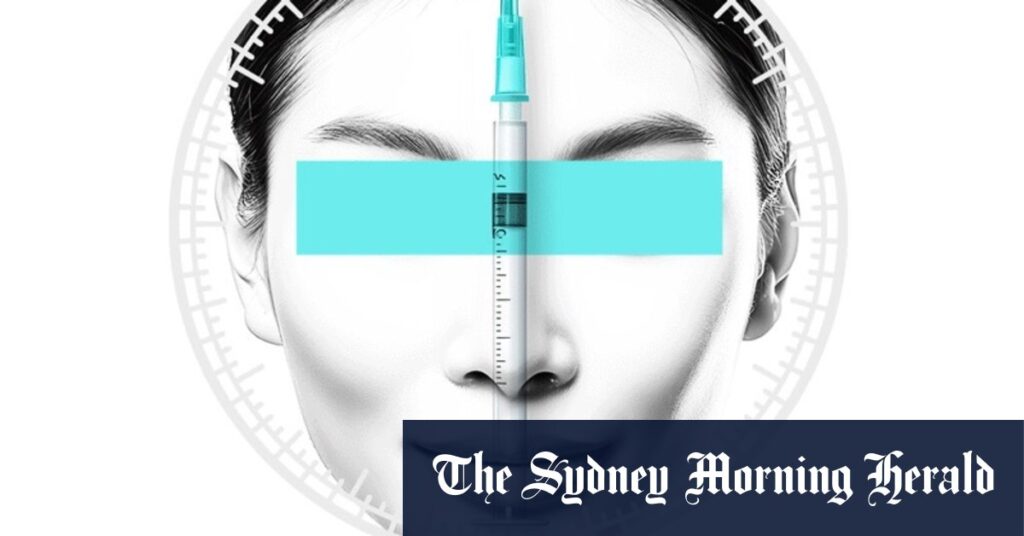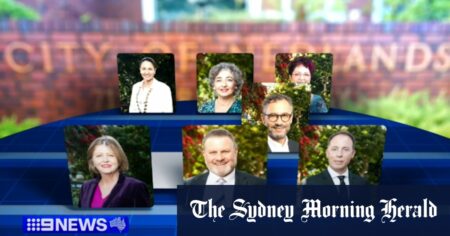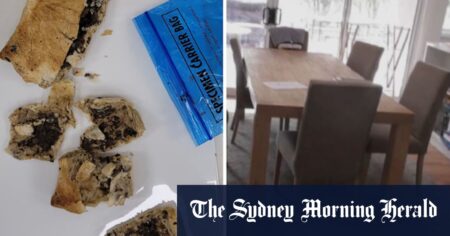Nurses in the sector will be required to have at least one year’s full-time experience working as a nurse outside non-surgical cosmetic procedures.
The move follows concerns that some nurses, after undertaking publicly funded courses intended to tackle hospital and aged care workforce shortages, were immediately moving into the injectables field without acquiring the necessary complex anatomical knowledge.
“These types of procedures are undertaken every day and can have serious consequences if not done correctly,” Nursing and Midwifery Board chair Veronica Casey said. “No practitioner should put their bottom line ahead of patient welfare, and these guidelines place the focus squarely on the safety of those in their care.”
One Sydney cosmetic doctor, Tom Parmakellis, told a room of cosmetic injectable practitioners earlier this year that some telehealth doctors – without identifying what practice or company they were from – did up to 300 cosmetic injectable consultations in one day. “That’s completely ridiculous,” he said.
The boom has sparked concerns among beauty industry activists, academics and cosmetic doctors who prescribe in person.
Over the past 2½ years, AHPRA has investigated about 360 reports of problems with non-surgical cosmetic procedures, leading to cautions, conditions on registrations or an undertaking from the practitioner.
The new guidelines also crack down on advertising, including the use of sexualised imagery to spruik cosmetic procedures. Lifestyle shots captured from the beach or a hotel room, emotional reactions from patients, and language that idealises high-risk cosmetic procedures or minimises their risk – such as “more natural” or “perfect” – will also be banned.
And the guidelines bar artificial intelligence being used to “predict an individual’s appearance post-procedure or predict a person’s appearance without a procedure. The use of these tools in advertising can create unreasonable expectations of outcomes”.
Regulators have wrestled with enforcing existing rules. This masthead revealed in March that thousands of ads spruiking Botox and dermal fillers were already breaching Australia’s health advertising laws, but the Therapeutic Goods Administration was doing almost nothing to stop the breaches.
The new rules will also put in place a mandatory seven-day cooling-off period for under-18s who want cosmetic injectables, after their first consultation with a doctor or nurse practitioner and any procedure.
New rules on influencers may also be designed to target younger Australians and follow separate guidelines released in 2023 which require that cosmetic surgery advertising not be false or use influencer testimonials. That move followed another investigation by this masthead and 60 Minutes that revealed hundreds of patients were left scarred by improperly trained doctors.
AHPRA will go further on Tuesday, stating in its latest guidelines that “the use of social media ‘influencers’, ‘ambassadors’ or similar for advertising increases the risk that patients are not fully informed and that they may form unrealistic expectations of results.
“The content published by social media influencers or ambassadors is considered to pose a particular risk to younger people due to the nature of the audience for some social media platforms.”
Industry researchers Operation Redress have campaigned for tighter rules since 2020, and researcher Michael Fraser said the new guidelines made clear “the current advertising of cosmetic injectables has no place in Australia’s medical sector”.
Loading
Fraser predicted the cosmetic injectables industry would argue it was being silenced. “They are not. They are being held to the same standard as other regulated health professionals. We do not see other practitioners on a systemic level trivialise and glamourise procedures like this.
“This industry is happy to push the highly profitable message that we all need Botox and filler to ‘balance’ our normal natural face, yet become apoplectic when there is a push for regulatory balance to protect the public,” he said.
Fellow Operation Redress researcher Maddison Johnstone said artificial intelligence on social media was driving unrealistic expectations among patients and needed to be reined in.
“Worse still, injectors are sharing AI-generated images to depict how people might look as they age if they do not undergo cosmetic injectable procedures. This is intended to drive insecurities and fear without any basis in fact.” she said.
Health authorities say the new guidelines would mean all medical practitioners were operating under similar rules.
Medical Board of Australia chair Susan O’Dwyer said the guidelines would help better protect patients by aligning standards across professions.
“These guidelines make sure we’re all working from similar playbooks for the safety of our patients. We’re also raising the bar for anyone advertising these procedures, making it simpler for consumers to make safe and informed decisions,” she said.
Read the full article here

















